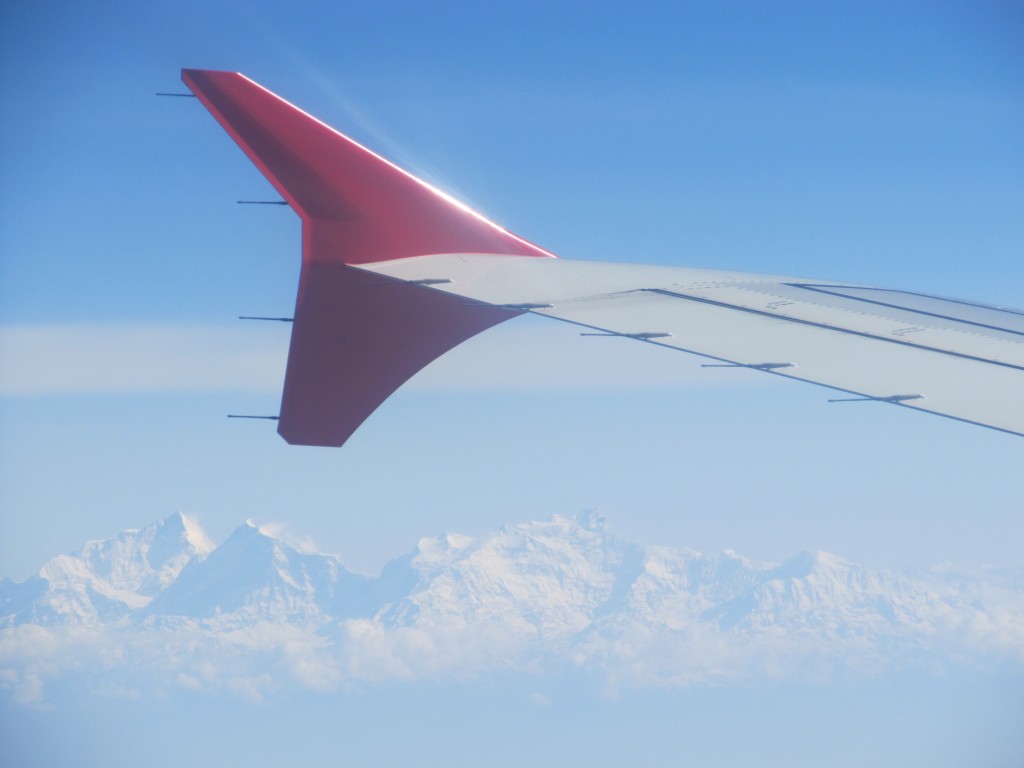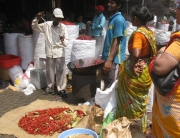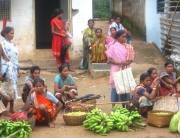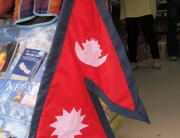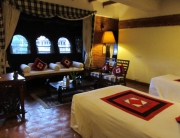A childhood ambition to collect a Kathmandu stamp in my passport drew me to Nepal this year. The thrill began on my Delhi flight when I first caught sight of the jagged outline of the snow – capped Himalaya on the horizon. As we descended, deepvalleys with roads zig zagging up their sides, terraced, golden harvested paddy fields and multicoloured, flat topped buildings of Kathmandu came into view. Like Delhi, the traffic from the airport was noisy and abundant, so the tranquility of Hotel Tibet International was welcome. It was within easy walking distance of my favourite spot, the magnificent Bodhnath stupa. Just as Agra is instantly identifiable with the Taj Mahal, so Bodhnath says “Kathmandu” (well, if you know Nepal!) As I wandered around the stupa it struck me that its “persona” changes with the time of day or weather, just like the Taj Mahal. Maybe, it’s something in the eyes. When the sun glinted off the gilded tower and the wind whipped up the strings of prayer flags, casting their mantras to heaven, the eyes seemed to have a benevolent air. But the following day when April storm clouds gathered, the Buddha’s eyes seemed to become more brooding.
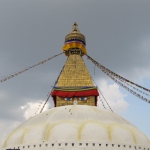 At night, from the roof top of one of the many small restaurants overlooking the stupa, the eyes watched protectively over the steady flow of pilgrims still circumnavigating the dome, lighting butter lamps and reciting prayers. I revisited Boudha several times and each time there was something new to see. Old ladies dressed in traditional costume spinning the prayer wheels as they walked around the base of the stupa. Devotees prostrating themselves full length on the ground in the courtyard. Artists concentrating on intricate thangka, Tibetan religious paintings. Tiny shops selling Tibetan singing bowls, butter lamps, dramatic, vibrant papier-mache masks and all sorts of Buddhist paraphernalia. The perfect place to say a prayer and watch the world go by.
At night, from the roof top of one of the many small restaurants overlooking the stupa, the eyes watched protectively over the steady flow of pilgrims still circumnavigating the dome, lighting butter lamps and reciting prayers. I revisited Boudha several times and each time there was something new to see. Old ladies dressed in traditional costume spinning the prayer wheels as they walked around the base of the stupa. Devotees prostrating themselves full length on the ground in the courtyard. Artists concentrating on intricate thangka, Tibetan religious paintings. Tiny shops selling Tibetan singing bowls, butter lamps, dramatic, vibrant papier-mache masks and all sorts of Buddhist paraphernalia. The perfect place to say a prayer and watch the world go by.


